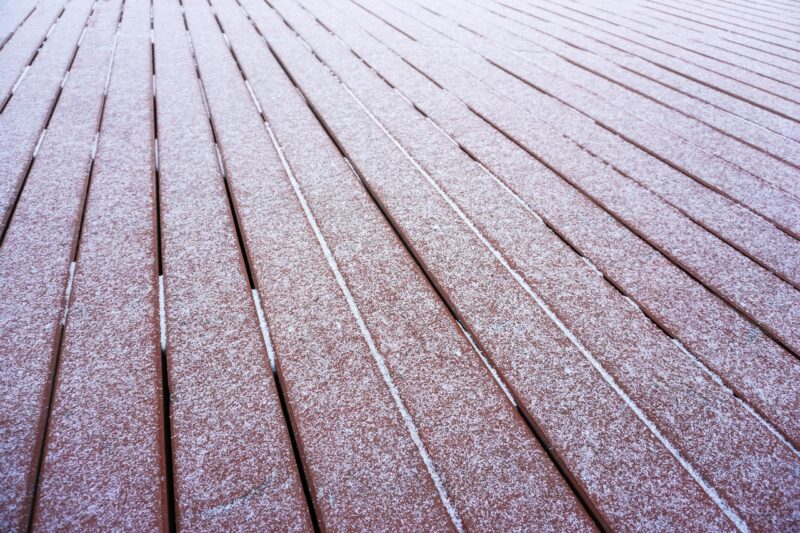Published: 06/03/24 By: Mike Bekin
We all know that winter can be tough on decking, especially when it is left to weather the frost and winds alone. But with a little maintenance and TLC, the cold does not have to hurt your timber. In fact, with our expert tips, it can look just as good come spring as when it was first installed.
Ready to learn more? Here are our tips to keep your timber decking looking fresh throughout the winter months.
Make the Right Timber Choice
Decking which can hold its own during the winter all starts with the timber species you choose. Because your decking is used outdoors, we recommend either a durability class 1 or class 2 species. These timbers have great natural resistance to rot and infestation, giving them a headstart when the cold sets in, and also a longer lifespan.
Some of the timber species which are well-suited for long-lasting decking include:
Find out more about our softwood and hardwood decking board recommendations and choose the right match for the weather. All our timber is sustainable and FSC or PEFC-certified.
Prep Before Winter
The lead-up to winter is the perfect time to carry out any maintenance on your decking. You should do this once or twice a year anyway, and it will go a long way to preventing minor issues from becoming major problems when the temperature drops.
Start by inspecting your decking boards for any damage. This can include cracks in your timber as well as rotting wood. Wherever you see damage, take the necessary steps to fix the issue before the cold, wet weather makes it worse.
A great way to keep your deck protected over the winter months is to seal and finish it. The timbers we have recommended do not need treatment, but re-sealing can prevent moisture penetration and a finish can add an extra level of resistance to your timber, keeping warping, splintering and rot at bay.
Get Rid of Items on Your Decking
During the summer, it is normal to have a set of chairs and a BBQ set out on your deck. Come winter, though, we recommend putting items such as these (including plant pots) into storage when not in use. This is to prevent any damp spots from developing beneath the furniture, as well as to keep insects from gathering and causing damage to your decking.
Regularly Remove Debris
Get ready to sweep! Dropping leaves and heavier winds can lead to a pretty big increase in debris landing on your deck from autumn onwards. To prevent biodegradable material from rotting on your wood, give your boards a regular sweep with a soft brush, and remove tough dirt with a harder-bristled brush. Be gentle when cleaning, and avoid using anything metal to scrape your deck.
How to Get Rid of Ice and Snow
One of the most frequently asked questions we hear around winter decking maintenance is how to get rid of ice and snow. This is a great question, so no complaints from us! Removing ice and snow is a must to prevent moisture from sitting on the timber, as well as reducing the chance of weakening boards from all the weight, and the quicker you get rid of it the better.
We recommend keeping a plastic shovel and soft brush on hand to get rid of any snow. A little hack for lighter snow is to use a leaf blower to clear the timber quickly . To de-ice your timber decking, you can use a wood-safe and animal-safe de-icer, such as Safe Paw, or simply pour hot water onto your boards to melt the ice rapidly. Just be sure you sweep off the water as you go to prevent further freezing.
Find Timber Decking at EcoChoice
If you are thinking of getting timber decking installed but are not sure you want the maintenance, we can help. Get in touch with our team and we will be happy to talk more about different options for your timber species and tips for low-maintenance upkeep. When it comes to your decking, we are the experts.
